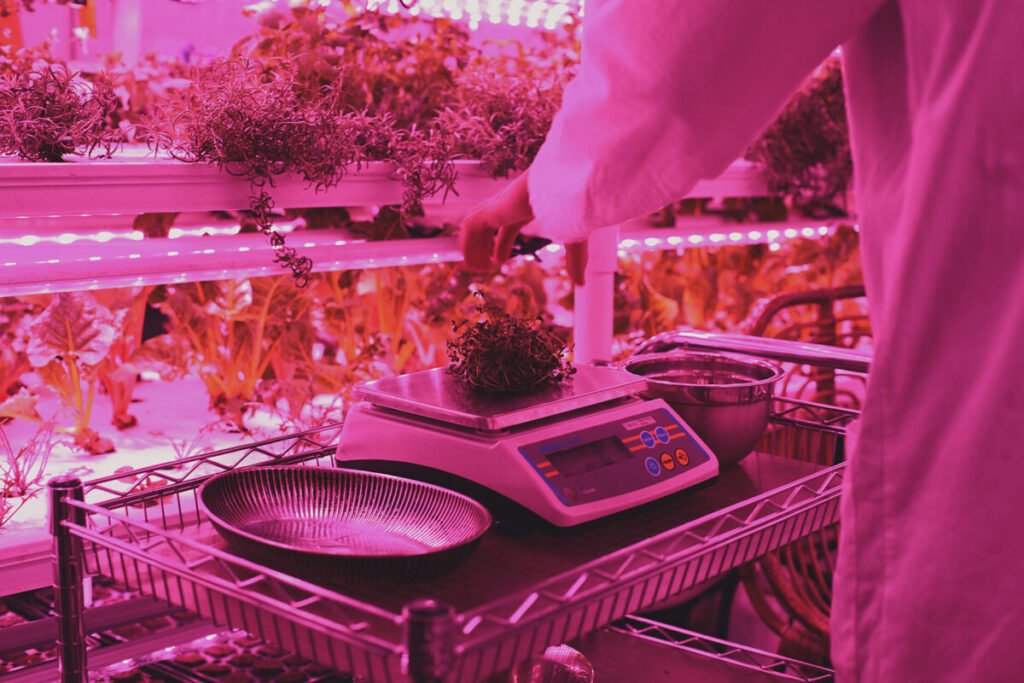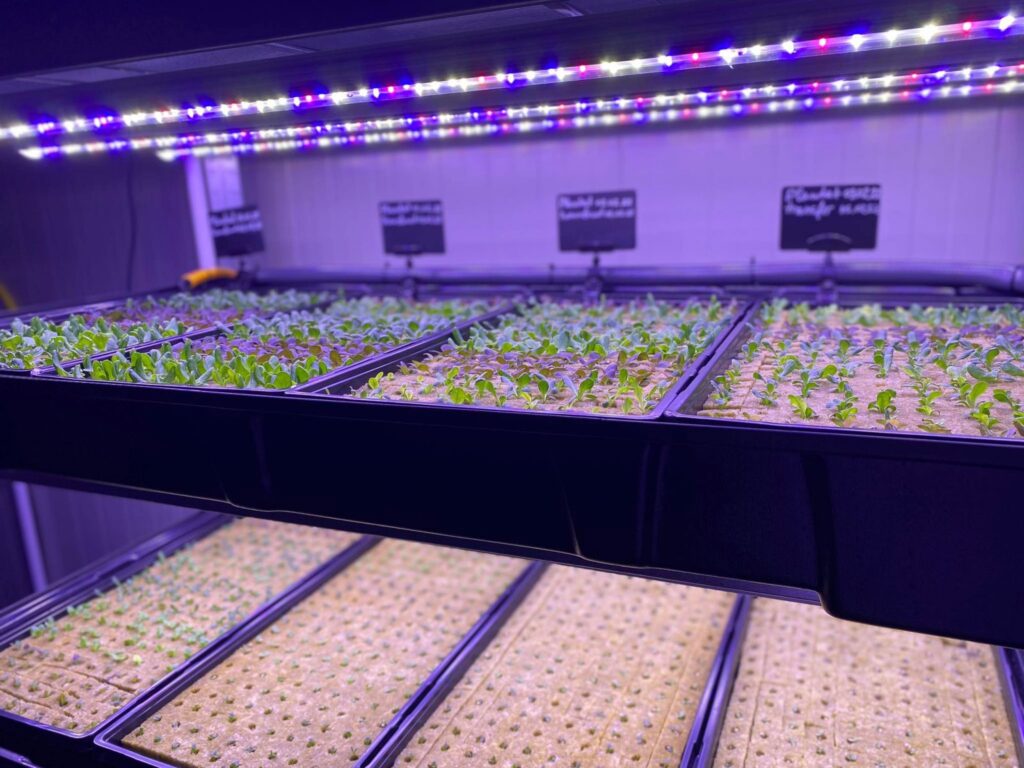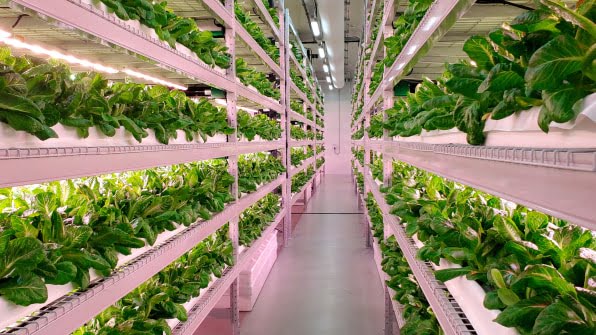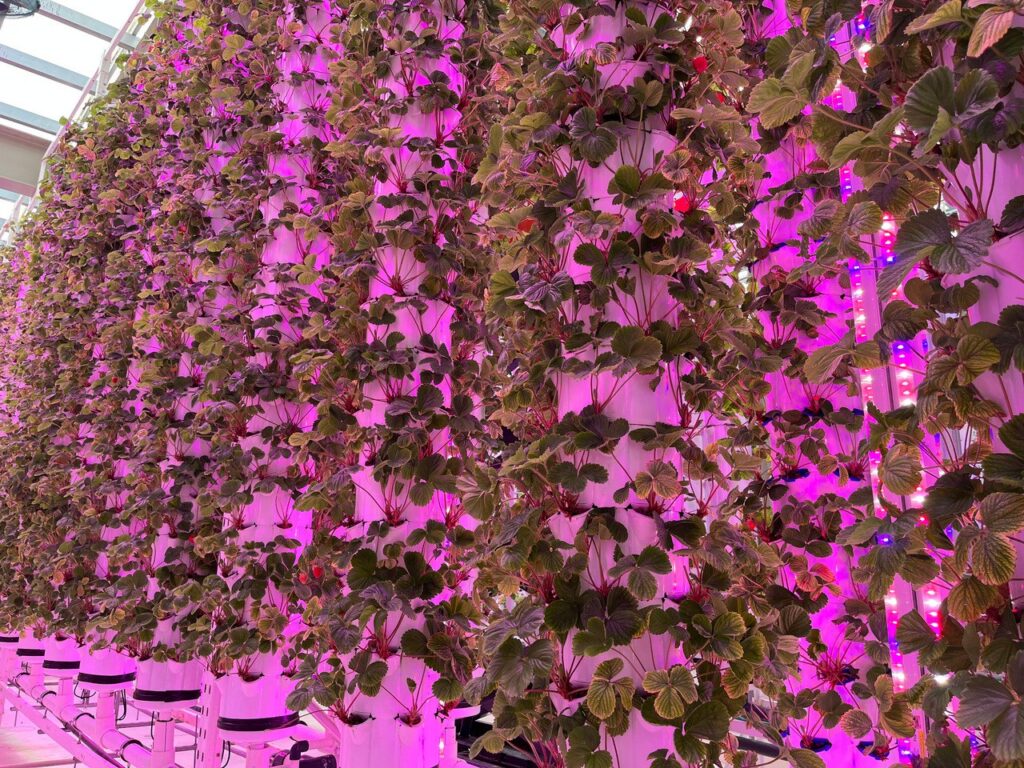As energy prices and inflation rose, vertical farms in Western Europe downsized and went bankrupt. In emerging Europe, many are growing, Emerging Europe informs.
As Europe has reassessed its carbon footprint and food sustainability, interest in vertical farms has soared.
By stacking layers of growing space for crops lit by LED lights atop each other in warehouses and other structures, vertical farming allows for more land efficient agriculture closer to urban population centres—minimising carbon emissions and costs from shipping produce around the world. Indoor growth spaces are pest free, and plants can be harvested up to 15 times a year instead of two times yearly in a conventional field.

While Earth’s population grows by 5.5 million inhabitants per month, its area of agricultural land decreases by 23 hectares every minute. Climate change is shifting where certain crops can be grown and will make farming in many areas impossible, and people in many countries are migrating from rural areas to cities.
When taken together, these trends make vertical farming seem like a compelling solution to issues of food security and sustainability and have driven record-breaking investing in vertical farming firms in North America, East Asia, and Europe. The Gulf States and other countries in the Middle East have also emerged as ideal locations for vertical farming due to proximity to food insecurity and cheap energy.
Challenges of energy intensity
In 2022, however, vertical farming in Europe struggled as the cost of keeping LED lights and climate controls on skyrocketed.
France’s Agricool, which had raised 30 million euros, went bankrupt. Infarm—based in Berlin and once Europe’s largest vertical farming company—had raised over 600 million US dollars in venture capital and had operations in the United Kingdom, France, Germany, the Netherlands, and Denmark but laid off 500 employees—half of its workforce—in late 2022, citing supply chain disruptions, power expenses, and the economic environment as factors. As of June, Infarm had terminated partnerships with European grocery chains and planned to leave the continent entirely in favour of other regions, likely the Middle East.
“It is interesting to note that the main advantage of vertical farms is the high level of interest in them from large investors, which is also their biggest problem,” says Andriy Yarmak, an economist at the Investment Centre of the United Nations’ Food and Agriculture Organisation (FAO).
“After all, most large investors do not delve into the details of technology and do not bring any knowledge and experience to the project, but simply provide funding, which I call ‘impatient money’. They just want to get the fastest and highest return on their investment. Since vertical farming technologies and all marketing channels for products have not yet been worked out, this leads to many problems and bankruptcies in this industry on a global scale.”
According to Yarmak, the crops best suited for cultivation in vertical farming are expensive plants with short production cycles and an almost complete absence of competition. Many successful vertical farms are in high-income cities with developed hotel, catering, and restaurant (HoReCa) sectors. Oftentimes, profitable vertical farms are attached to HoReCa institutions with which they partner.
Read also: What is reasonable to grow in vertical farms? – Strawberries!
As inflation has risen across Europe and purchasing power has decreased, consumers are spending less on splurges at high-end restaurant and hotels that work with vertical farms. There are, however, bright spots.
Geopolitics drives success in emerging Europe
Much less written about than the vertical farms of North America and Western Europe are those of emerging Europe. There are vertical farms in Lithuania, Ukraine, Moldova, and Georgia that have shown remarkable resilience in the face of the challenges of last year.
Tbilisi’s SpaceFarms is housed in the Stamba Hotel and supplies all of the Adjara Group’s restaurants with greens year-round. SpaceFarms offers full technical support and consultative services to HoReCa firms interested in its Modular Farm Spots—which can produce 15 to 20 kilogrammes of crops per month in two square metres. While the war in Ukraine caused energy prices to surge around the world, it also brought many Russians fleeing conscription and Ukrainians escaping the conflict to Georgia—including many remote workers who will dine and stay at SpaceFarms’ partners.
In Ukraine itself, vertical farmers have adapted to the destruction of the war with remarkable resilience. After Viktor Shuleshko’s vertical farm in Dnipro was destroyed by Russian shelling, he rebuilt it in a basement bomb shelter—insulated from temperature extremes and missiles alike. While Shuleshko estimates it will take several years to make back the cost of reconstructing his business, he is already planning to expand from producing basil and lettuce to other products.
As Ukraine seeks to become a “start-up nation” like Israel, Israeli start-up Vertical Field has installed pilot vertical farms in the stores of Ukrainian supermarket chain Varus.

Papa’s Greens delivers products to 60 per cent of HoReCa sector establishments in Chişinău and sells packaged mixed salads, micro-greens, and edible flowers in Moldovan supermarket chains. According to an analysis by EastFruit, edible flowers sell for the highest prices of all crops with a short growing cycle.
Leafood’s farm in a massive warehouse on Vilnius’s outskirts, home to 12,600 square metres of growing area, became operational this May. By the time it reaches full capacity this autumn, it hopes to harvest a tonne of leaves from 12 varieties of greens and herbs every day—a tenth of the total demand in Lithuania. Leafood is using 14-storey growing towers and operational software developed by Taiwanese vertical farms maker YesHealth—one of Leafood’s investors—and has hired Taiwanese engineers to come to Lithuania and train local staff. This synergy comes as Lithuania and Taiwan increase economic and diplomatic relations.
Leafood’s founder, Valentinas Civinskas, hopes to be able to expand soon into neighbouring Baltic countries and Poland. “The main idea is to be close to the end consumer,” says Civinskas. “Of course we can export but then we’re going against our idea. It has to be close, no long shipments: so it means building local vertical farms in other countries. In a year, we hope to have a plan for the next country. You’ll see such a farm, or maybe two, three times larger in another country.”
While the future of vertical farming remains uncertain in much of Europe, the right location, geopolitics, and expertise can help resilient firms profit while supplying locals with the freshest, in-house greens.
The use of the site materials is free if there is a direct and open for search engines hyperlink to a specific publication of the East-Fruit.com website.






1 comment
Yes strawberry is right product to grow in Vertical Farming.
The photograph you have shown in the article is from our project in Dubai!!